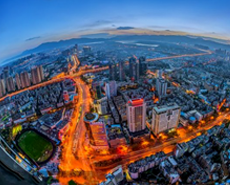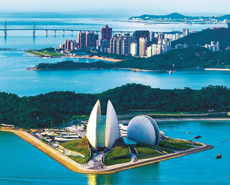
Chinese lithium carbonate market to see limited price decline in H2 2020
----Interview with Ke Chao
General Manager of Sales Department
Qinghai CITIC Guo'an Lithium Development Co., Ltd.
General Manager of Sales Department
Qinghai CITIC Guo'an Lithium Development Co., Ltd.
Qinghai CITIC Guo'an Technology Development Co., Ltd. was set up in Golmud Kunlun Economic Development Zone, Qinghai province in March 2003. It has mining licenses on West Taijinai'er Salt Lake, one of the first 40 demonstration bases approved by the Chinese Ministry of Natural Resources and Ministry of Finance on comprehensive utilization of mineral resources. The company now has production capacities of 500,000tpa of potash fertilizer, 10,000tpa of lithium carbonate and 10,000tpa of refined boric acid as well as a side-product production capacity of 50,000tpa of magnesium oxide.
Asian Metal: Thanks for taking our interview. Would you please give a brief introduction on your company first?
Mr. Ke: In March 2003, Qinghai CITIC Guo'an Technology Development Co., Ltd. was set up in Golmud Kunlun Economic Development Zone, Qinghai province with a registration capital of RMB2.2 billion (USD311 million). On May 26, 2017, it set up a fully owned subsidiary Qinghai CITIC Guo'an Lithium Development Co., Ltd. Focusing upon research, production and selling of related mineral resources including potassium, lithium, boron and magnesium at the East and West Taijinai'er Salt Lakes, Qaidam Basin, the subsidiary company is a high-tech salt lake chemistry enterprise integrating resources development, technology research, and development of new materials and new products. It has mining licenses on West Taijinai'er Salt Lake, one of the first 40 demonstration bases approved by the Chinese Ministry of Natural Resources and Ministry of Finance on comprehensive utilization of mineral resources, and also a national pilot base for green mining appointed by the Ministry of Natural Resources. Our mining licenses cover an area of 493.29 square kilometers with bountiful reserves of minerals and metals including lithium, potassium, boron, magnesium and so on. The Lake has a measured reserve of around 2.83 million tons of lithium chloride.


Asian Metal: Would you please give an introduction on your main businesses and projects?
Mr. Ke: We now have production capacities of 500,000tpa of potash fertilizer, 10,000tpa of lithium carbonate and 10,000tpa of refined boric acid as well as a side-product production capacity of 50,000tpa of magnesium oxide.


Asian Metal: The lithium carbonate market sees fierce competition among upstream suppliers now. What are your advantages and characteristics in raw material supply and production process?
Mr. Ke: Regarding resources, we now have mining licenses covering an area of 493.29 square kilometers of the West Taijinai'er Salt Lake which has bountiful reserves of potassium, lithium, magnesium and boron. The 2018 mineral resources estimate report showed that the Lake has a reserve of about 2.63 million tons of lithium chloride. Our mining conditions are excellent and enough to ensure development of our company. Meanwhile, we have sufficient technical advantages. We have a number of patented technologies on salt lake resources mining, and also have complete capacities to carry out steady production of battery grade lithium carbonate. Technical indicators of our lithium carbonate products all exceed national standards and are far higher than those of other brine lithium enterprises in China, quite close to or even exceeding Albemarle products. Our products have been used in renowned brands such as LG, Samsung, Tesla and BYD.
















